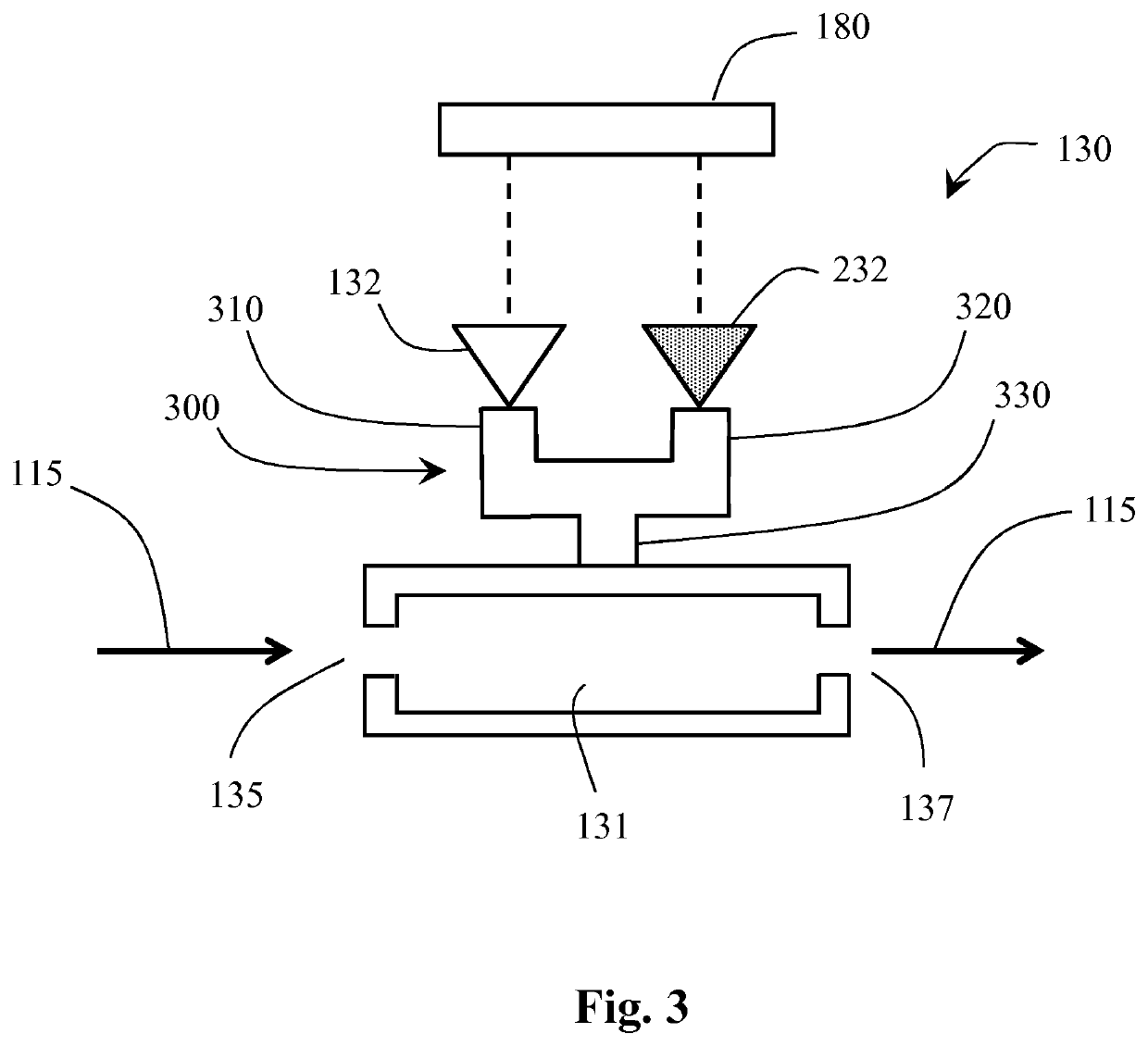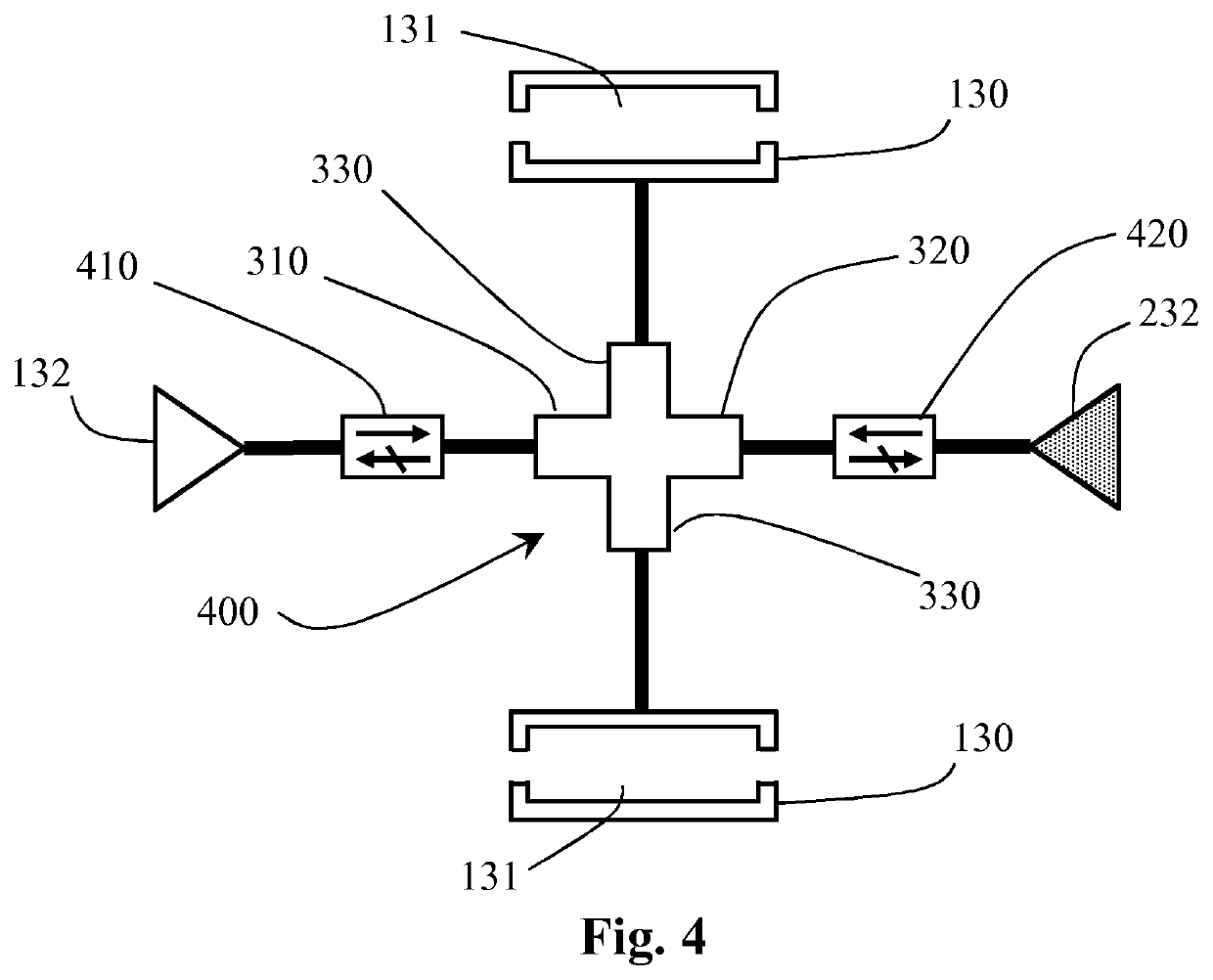Proton linear accelerator system for irradiating tissue with two or more RF sources
a technology of protons and accelerators, applied in accelerators, radiation therapy, therapy, etc., can solve the problems of increasing the cost of the accelerator system, requiring an increase in the rate of rf acceleration pulses, and requiring more expensive rf sources
- Summary
- Abstract
- Description
- Claims
- Application Information
AI Technical Summary
Benefits of technology
Problems solved by technology
Method used
Image
Examples
Embodiment Construction
[0032]FIG. 1 schematically shows a proton linear accelerator (or linac) system 100 according to the invention. The linac system 100 comprises a proton beam source 110 for providing a proton beam 115 during operation. A beam output controller 120 is provided to determine and / or control the beam current of the proton beam exiting the source 110. The proton beam 115 exiting the beam controller 120 is a pulsed beam. It may also be advantageous to configure the beam controller 120 to vary the proton beam duty cycle 145 (depicted in FIGS. 5 and 6). The beam output controller 120 may also be configured to blank the beam for one or more proton beam duty cycles 145, 245 As depicted in FIGS. 5 and 6, the operating cycle 190 of the proton beam 115 usually comprises an on-time and an off-time—the on-time is when the proton beam 115 energy is greater than zero, and the off-time is when the proton beam 115 energy is substantially lower than the on-time energy. The proton beam duty cycle 145 is th...
PUM
 Login to View More
Login to View More Abstract
Description
Claims
Application Information
 Login to View More
Login to View More - R&D Engineer
- R&D Manager
- IP Professional
- Industry Leading Data Capabilities
- Powerful AI technology
- Patent DNA Extraction
Browse by: Latest US Patents, China's latest patents, Technical Efficacy Thesaurus, Application Domain, Technology Topic, Popular Technical Reports.
© 2024 PatSnap. All rights reserved.Legal|Privacy policy|Modern Slavery Act Transparency Statement|Sitemap|About US| Contact US: help@patsnap.com










